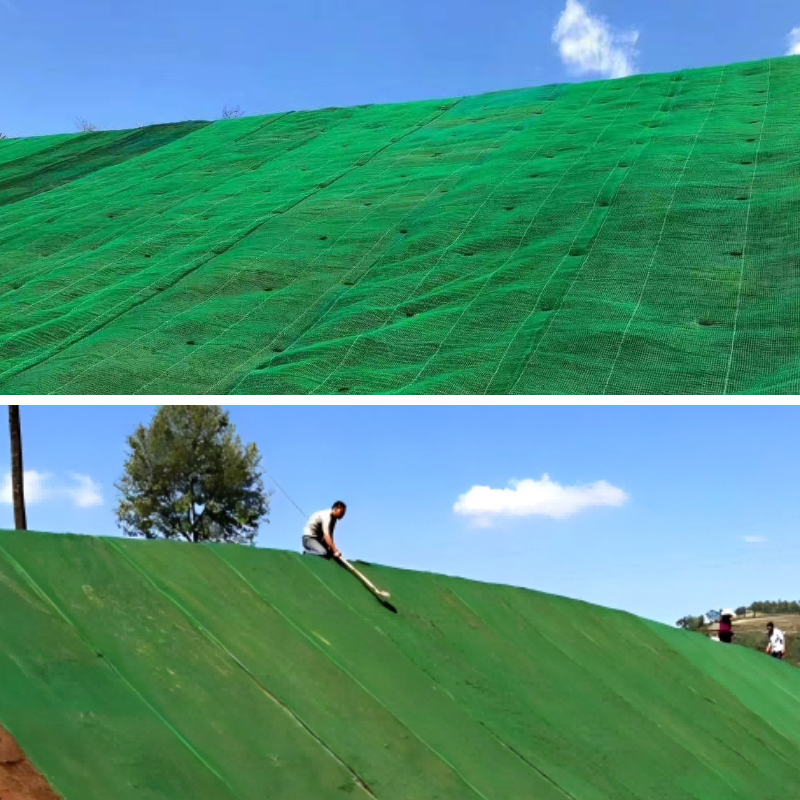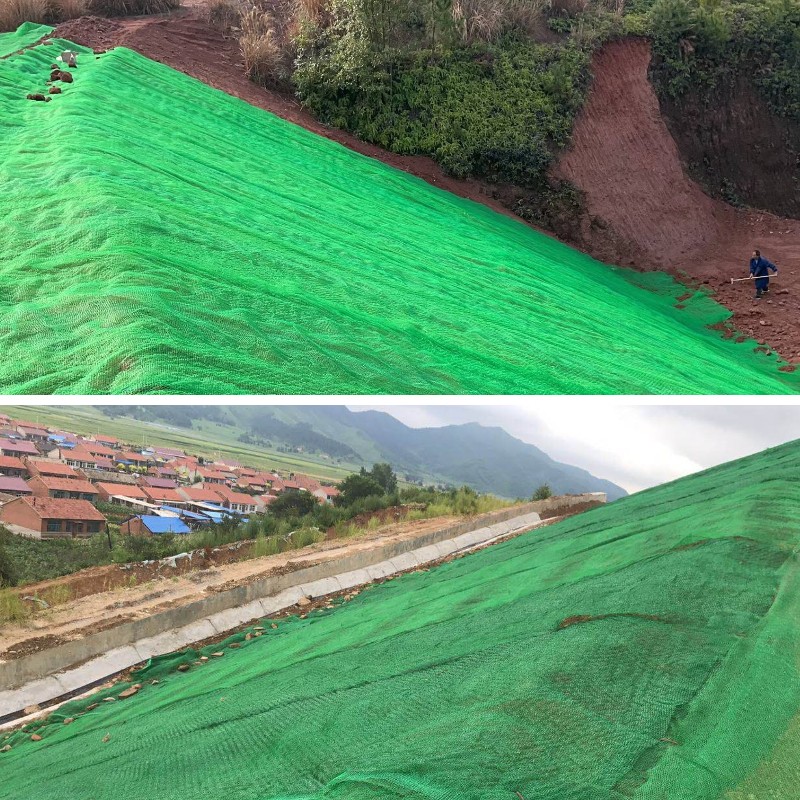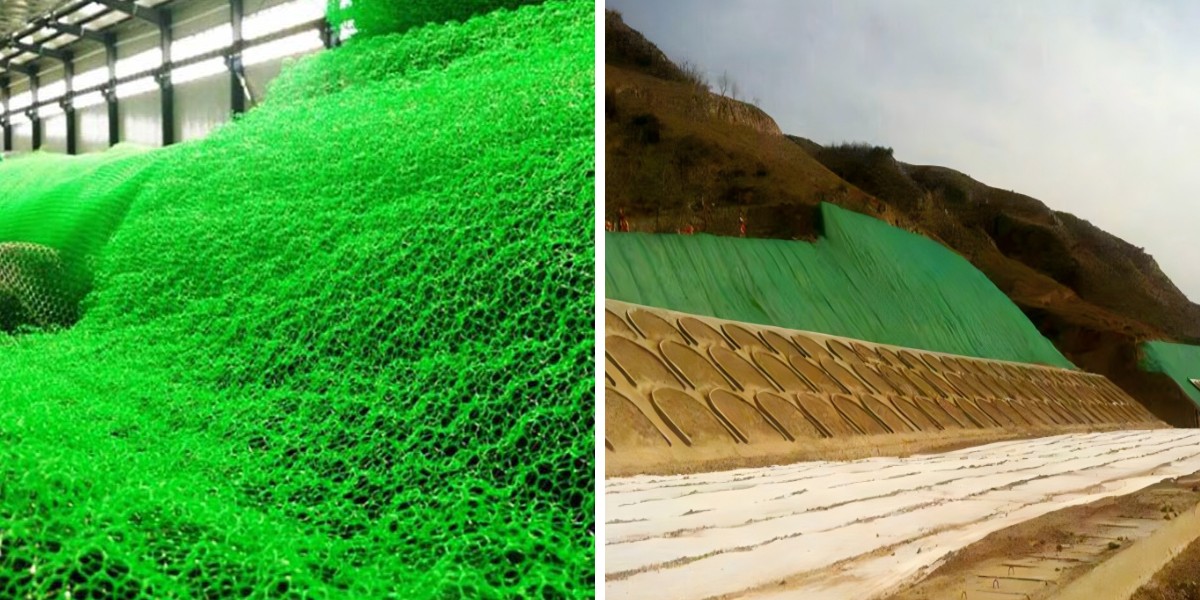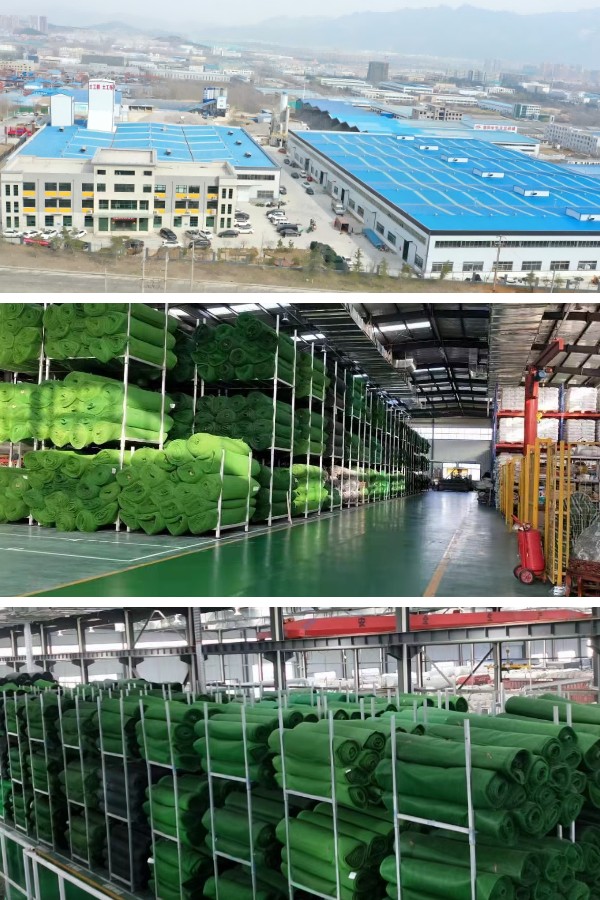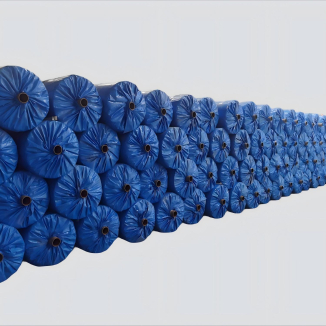The Role of Geomat in Green Construction: Supporting Sustainable and Eco-Friendly Projects
Green construction—guided via standards of power efficiency, environmental protection, and long-term sustainability—relies on progressive substances to limit ecological influence whilst improving task performance. Geomat (a versatile geosynthetic fabric) and 3D geonet (its three-dimensional, porous counterpart) have emerge as crucial in this space. Unlike normal substances that regularly use up herbal sources or disrupt ecosystems, these merchandise assist core inexperienced goals: soil preservation, water conservation, vegetation restoration, and strength savings. This article explores four key roles of geomat and 3D geonet in inexperienced construction, with sensible purposes for sustainable projects.
1. Geomat for Soil Stabilization & Erosion Control: Protecting Site Ecology
Soil erosion and degradation are important threats to inexperienced development sites—exposed soil can wash away for the duration of rain, clog close by waterways, and spoil native habitats. Geomat and 3D geonet act as a shielding barrier and structural reinforcement, maintaining soil integrity during the assignment lifecycle.
1.1 Temporary Erosion Control During Construction
During website online preparation, naked soil is inclined to wind and water erosion, so geomat (typically non-woven or woven polypropylene) is laid over uncovered areas to defend soil particles whilst permitting air and moisture to penetrate—critical for retaining soil microbial exercise (a key phase of ecological sustainability); for example, in a LEED-certified residential neighborhood project, geomat used to be used to cowl 5,000 rectangular meters of excavated soil, lowering erosion with the aid of 85% in contrast to standard straw blankets and averting sediment runoff into a close by wetland, and not like straw (which decomposes rapidly and requires general replacement), geomat lasts the whole building section (6–12 months) with minimal maintenance. In sloped areas (e.g., hillside constructing sites), 3D geonet is paired with geomat to add structural support: the 3D grid’s raised ribs lure soil to stop downward movement, whilst the geomat layer filters rainwater to decrease splash erosion, a aggregate that meets strict inexperienced development requirements for erosion control, such as the EPA’s Stormwater Management Model (SWMM) requirements.
1.2 Long-Term Soil Structure Preservation
Green building prioritizes soil fitness past challenge completion, as healthful soil helps vegetation increase and carbon sequestration, and 3D geonet reinforces soil shape long-term—especially in high-traffic or load-bearing areas (e.g., parking lots, pedestrian paths); for a sustainable business park, 3D geonet was once established underneath permeable pavement, the place the geonet’s 3-dimensional channels distribute weight evenly throughout the soil to forestall compaction (a frequent difficulty with standard pavement that kills soil microbes), and paired with a pinnacle layer of geomat to filter debris, this gadget maintained 90% of the soil’s unique permeability, permitting rainwater to recharge groundwater and guide close by trees. Unlike concrete or asphalt (which seal soil and disrupt ecological cycles), 3D geonet and geomat work with the soil to keep its herbal functions—aligning with inexperienced constructing certifications like BREEAM and LEED, which reward initiatives that defend soil ecosystems.
2. Geomat in Sponge City-Oriented Rainwater Management
Sponge town design— a cornerstone of inexperienced construction—aims to capture, store, and reuse rainwater, decreasing city flooding and easing stress on municipal water systems. Geomat and 3D geonet are key elements of this design, improving rainwater infiltration and filtration.
2.1 Enhancing Rainwater Infiltration
Traditional city building makes use of impermeable surfaces (e.g., concrete) that generate giant volumes of runoff, however 3D geonet creates a community of drainage channels that velocity up rainwater infiltration into the ground, mimicking herbal hydrological cycles; in a sponge metropolis residential task in Shanghai, 3D geonet was once built-in into the site’s rain backyard system, the place the geonet’s 50mm-thick grid supplied a porous pathway for rainwater, growing infiltration quotes through 60% in contrast to a backyard except geosynthetics, and a layer of geomat was once positioned above the 3D geonet to stop soil from clogging the channels, making sure the gadget labored effectively for over 10 years. This setup no longer solely decreased flooding danger however additionally reduce the project’s reliance on municipal water: captured rainwater was once reused for irrigation, saving 150,000 liters of potable water annually— a metric that contributed to the project’s LEED Gold certification.
2.2 Filtering Runoff to Reduce Water Pollution
Green construction requires minimizing water pollution, and geomat acts as a herbal filter to get rid of sediments, chemicals, and particles from rainwater runoff; for a sustainable industrial park, geomat was once established alongside the edges of parking a lot and loading docks, the place the non-woven geomat cloth trapped oil, heavy metals, and sediment from runoff earlier than it entered storm drains or close by water bodies, and checking out confirmed the geomat eliminated 92% of suspended solids and 75% of oil contaminants—exceeding the nearby inexperienced construction’s water great standards. In large structures (e.g., regional stormwater detention ponds), 3D geonet is used to line the pond’s bottom, working with geomat to create a dual-layer filter: the 3D geonet offers structural guide to forestall the geomat from shifting, whilst each substances work together to sluggish runoff and enhance filtration, decreasing the want for chemical water remedies and aligning with eco-friendly development practices.
3. Geomat for Vegetation Restoration & Ecological Repair
Green development is now not simply about constructing sustainably—it’s about restoring ecosystems broken through development. Geomat and 3D geonet create most appropriate stipulations for vegetation growth, assisting reforestation, inexperienced roofs, and slope ecological restoration.
3.1 Green Roof & Vertical Garden Support
Green roofs are a hallmark of inexperienced construction, decreasing city warmth islands and enhancing air quality, and geomat performs a imperative function in securing developing media and stopping plant root damage; for a LEED Platinum office constructing in Berlin, geomat used to be used as a root barrier and media stabilizer in the inexperienced roof system, the place the woven geomat material avoided the light-weight developing media (e.g., perlite, peat moss) from washing away at some point of heavy rain whilst permitting plant roots to penetrate and get entry to nutrients, and not like artificial rubber root obstacles (which are non-recyclable), the geomat was once made from a hundred percent recycled polyester, aligning with the project’s zero-waste goals. On vertical gardens (e.g., constructing facades), 3D geonet is paired with geomat to create a third-dimensional developing space: the 3D geonet’s grid holds the developing media in place, whilst the geomat layer retains moisture—reducing irrigation desires via 30%—and this mixture supported a various combine of native plants, which attracted pollinators and multiplied the building’s ecological footprint.
3.2 Slope Ecological Restoration
Construction on sloped land regularly disrupts native vegetation, main to erosion and habitat loss, and 3D geonet and geomat speed up slope restoration with the aid of presenting a steady base for plant growth; for a dual carriageway growth mission in Oregon (USA), 3D geonet used to be established on a 30-degree slope to repair native grasslands, the place the geonet’s 3-dimensional shape anchored seeds and topsoil to stop erosion whilst seeds germinated, and a layer of biodegradable geomat (made from coconut fiber) used to be positioned on pinnacle to continue moisture and defend younger seedlings from wind damage. Within 6 months, the slope had 95% vegetation coverage—compared to 40% for slopes restored with standard straw mulch—and this method no longer solely met the project’s inexperienced development necessities however additionally saved costs: 3D geonet and geomat decreased the want for generic reseeding and erosion manage repairs, slicing long-term preservation costs by way of 50%.
4. Geomat for Energy Efficiency & Building Lifespan Extension
Green building emphasizes lowering power consumption and extending constructing lifespans (to decrease demolition waste). Geomat and 3D geonet make contributions to each desires via enhancing insulation and defending constructing elements from environmental damage.
4.1 Building Foundation Insulation
Heat loss thru constructing foundations bills for 15–20% of a home’s whole strength use, and geomat (specifically, thermal insulation geomat) acts as a barrier to stop warmness switch between the floor and the foundation, decreasing heating and cooling costs; for a net-zero strength residential venture in Canada, geomat with a thermal resistance (R-value) of three used to be set up round the concrete foundation, the place the geomat’s closed-cell shape trapped air to stop bloodless floor temperatures from seeping into the basement, lowering the home’s heating power use with the aid of 22% in iciness and also stopping moisture buildup (a frequent motive of mildew boom in basements). Unlike inflexible foam insulation (which includes hazardous chemical compounds like formaldehyde), the geomat used to be low-VOC (volatile natural compound), assembly the project’s indoor air great standards, and in less warm climates, 3D geonet is now and again used under the geomat to create a drainage layer—preventing groundwater from pooling round the basis (which can freeze and injury the concrete) and extending the foundation’s lifespan by way of 15–20 years.
4.2 Protecting Underground Utilities
Green development requires defending underground utilities (e.g., water pipes, electrical cables) to keep away from luxurious repairs and minimize fabric waste, and 3D geonet acts as a buffer between utilities and surrounding soil, stopping injury from soil motion or corrosion; for a sustainable college campus, 3D geonet used to be wrapped round underground water and sewage pipes, the place the geonet’s bendy grid absorbed stress from soil compaction to stop pipe cracks, whilst its porous shape allowed water to drain away—reducing corrosion from standing moisture, and paired with a geomat layer to filter soil particles, this device decreased utility restore frequency by way of 70% over 10 years. Unlike common concrete casings (which are heavy, challenging to install, and non-recyclable), 3D geonet and geomat are lightweight, effortless to handle, and recyclable at the quit of their lifespan—aligning with the round economic system concepts of inexperienced construction.
Final Thoughts: Geomat as a Cornerstone of Green Construction
Geomat and 3D geonet are extra than simply development materials—they are enablers of sustainable, eco-friendly projects. From defending soil and managing rainwater to restoring ecosystems and saving energy, these geosynthetics tackle a couple of inexperienced development desires whilst being least expensive and durable.
As the demand for inexperienced structures grows (driven by way of international climate desires and stricter environmental regulations), the function of geomat and 3D geonet will solely come to be greater critical. By integrating these substances into assignment design, building groups can supply structures that are now not simply environment friendly and resilient, however additionally sort to the planet.
Would you like me to create a project-specific Geomat & 3D geonet determination guide? It will tailor cloth types, set up tips, and sustainability metrics to your inexperienced development challenge (e.g., sponge town rain garden, inexperienced roof) for simpler implementation.
Contact Us
Company Name: Shandong Chuangwei New Materials Co., LTD
Contact Person :Jaden Sylvan
Contact Number :+86 19305485668
WhatsApp:+86 19305485668
Enterprise Email: cggeosynthetics@gmail.com
Enterprise Address: Entrepreneurship Park, Dayue District, Tai 'an City,
Shandong Province


